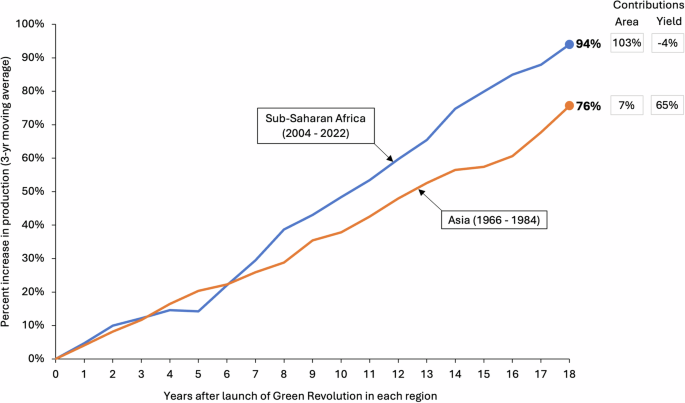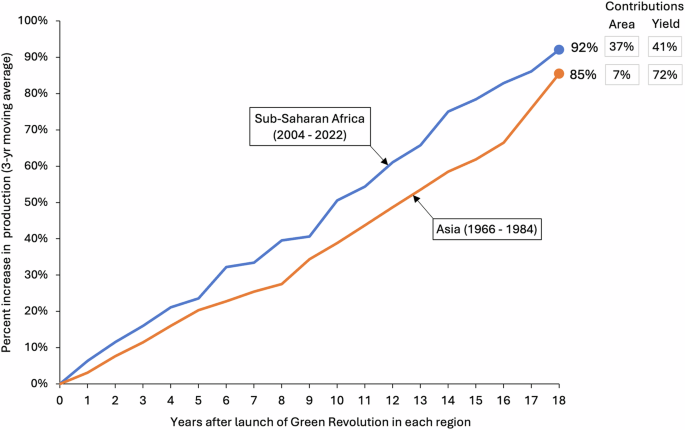The intensification of agriculture through the Green Revolution in Asia and sub-Saharan Africa significantly increased food production but also led to environmental challenges, including land degradation, biodiversity loss, and greenhouse gas emissions. Sustainable intensification (SI) has emerged as a strategy to address these concerns while ensuring food security. SI is a process that integrates interventions at global, regional, and national levels to enhance food availability and minimize the environmental footprint of agriculture. However, SI alone is insufficient; it must be accompanied by investments in market infrastructure, postharvest stewardship, healthy diets, and social protection.
Food security is a fundamental human right, yet the global food system continues to fall short in delivering it. Millions of people remain hungry, and billions lack access to nutritious diets. Disruptions from climate change, conflicts, and global crises have exacerbated food insecurity, highlighting the vulnerability of supply chains. Despite ambitious goals, progress toward achieving universal food security has stalled, with serious consequences for economic stability and environmental sustainability. SI offers a crucial approach to bridging the gap between current realities and future food needs.
The Green Revolution in Asia was driven by technological advancements, infrastructure investments, and supportive policies, leading to increased agricultural productivity and economic growth. In contrast, attempts to replicate this model in sub-Saharan Africa faced challenges such as dependence on rainfed agriculture, diverse staple crops, weak infrastructure, and policy constraints. In response, a more holistic approach termed the “uniquely African Green Revolution” was proposed, focusing on soil health, small-scale irrigation, and complementary investments in infrastructure and social safety nets. These efforts have led to significant increases in cereal production in Africa, though largely through land expansion rather than yield intensification.
Land conversion for agriculture has historically been necessary for human development, but it has also resulted in severe environmental consequences. While intensification in Asia has reduced the need for further land expansion, Africa’s agricultural growth has relied on both intensification and extensification. The challenge remains to increase productivity sustainably without further environmental degradation. SI provides a pathway to achieve this by emphasizing efficient input use, soil rehabilitation, and conservation practices.
SI aims to increase agricultural production while minimizing environmental damage. It encompasses multiple strategies, including improving input efficiency, restoring degraded land, shifting to lower-impact agricultural systems, and conserving natural ecosystems. A holistic application of SI ensures increased food availability while reducing the environmental footprint of agriculture. This approach builds on the successes of previous agricultural revolutions while incorporating insights from sustainable and regenerative practices.Fig. 2: Increase in root and tuber crop production in sub-Saharan Africa and Asia during the first 18 years of the green revolutions in each region, (2004–2022) and (1966–1984), respectively.


Each data point on the figure reflects the three-year moving average ending in the designated year. Figure 2 was prepared using Microsoft Excel. Source: FAOSTAT
However, SI alone cannot achieve universal food security. Complementary investments are essential in four key areas: market infrastructure, postharvest stewardship, healthy diets, and social protection. Strengthening market infrastructure improves food access, reducing postharvest losses enhances efficiency, promoting healthy diets addresses nutritional gaps, and social protection mechanisms support vulnerable populations.
A more integrated approach to food security requires multi-sector collaboration, informed policies, and strong leadership. Governments, businesses, and civil society must work together to implement SI effectively while addressing broader systemic challenges. Achieving universal food security necessitates a combination of sustainable agricultural practices, economic investments, and policy innovations to create a resilient and equitable food system for the future.
Fig. 1: Increase in cereal crop production in sub-Saharan Africa and Asia during the first 18 years of the green revolutions in each region, (2004–2022) and (1966–1984), respectively.


Each data point on the figure reflects the three-year moving average ending in the designated year. Figure 1 was prepared using Microsoft Excel. Source: FAOSTAT.

